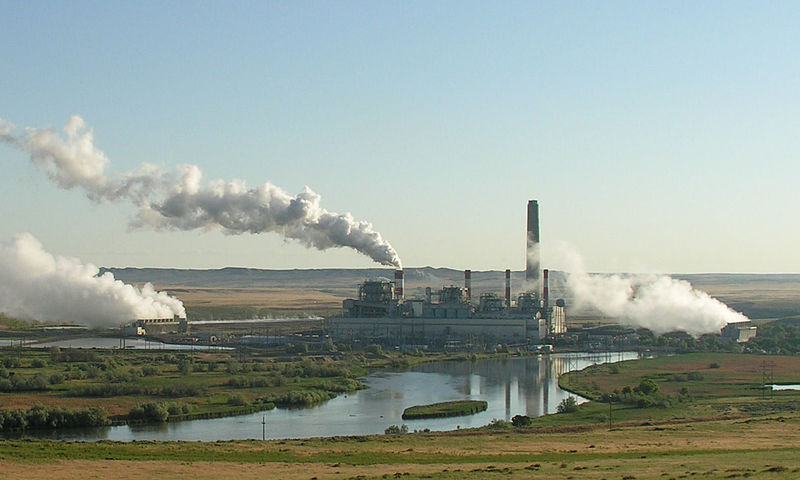The economic fallout from COVID-19 took a serious toll on U.S. fossil fuel workers and communities. But well before the coronavirus pandemic arrived, the U.S. fossil fuel industry was under significant pressure as the country moves toward cleaner forms of energy.
The fossil fuel industry is increasingly challenged by efforts to integrate climate priorities into the policy landscape, low-cost renewable generation, and investor concerns about financial risk. In the last year, the U.S. oil, natural gas and chemicals industry has seen exceptionally fast-paced layoffs, and coal was declining rapidly even prior to the onset of COVID-19.
A Sustainable Development Solutions Network Report found that about 12,000 workers in coal mining and related industries will face job displacement every year over the next nine years (2021 – 2030) as coal is phased out. The same report found that about 34,000 workers will lose their jobs each year (2031 – 2050) as oil and gas use decreases.
Transitions of this magnitude not only displace individual workers, they disrupt local communities due to foregone tax revenues from the closure of fossil fuel facilities and reduced local spending. Effective transition support will be key to maintaining thriving communities in the coming decades.
Internationally, we’ve seen some countries begin to address the vulnerability of fossil fuel jobs through “just transition” initiatives.
The EU established a Just Transition Mechanism to direct about $183 billion to fossil fuel and carbon-intensive regions most impacted by the energy transition from 2021-2027. Canada created and funded recommendations from a Task Force on Just Transition for Canadian Coal Power Workers and Communities, and invested $1.2 billion in abandoned oil and gas well cleanup in the wake of the coronavirus.
Efforts to ensure a just transition for fossil fuel workers in the United States are nascent, mostly happening at the state or local levels and focused on coal workers. Promising advancements include Colorado’s Just Transition Office and Just Transition Advisory Committee, and New Mexico’s recent legislation on a renewable energy standard that includes millions of dollars for impacted coal communities.
Nationally, the Obama administration launched the multi-agency POWER Plus Plan in 2015 to alleviate the economic impacts of the energy transition on coal workers and communities, but some provisions of the plan were never implemented and interagency efforts stalled under the Trump administration.
From Pennsylvania to Texas to Colorado, fossil fuel-dependent communities are spread across the country and are important constituencies for elected officials. Even within the narrow confines of bipartisan climate solutions, there are three areas where the federal government can provide immediate support to fossil fuel communities impacted by COVID-19 and amplify just transition efforts led by states:
1. Rehabilitating abandoned coal mines and plugging orphan oil and gas wells can employ fossil fuel workers while addressing public health and environmental issues.
Rehabilitating abandoned coal mines can be an important component of a just transition to a post-coal future. Cleaning up coal mine sites requires a sizeable and well-trained workforce. It provides significant opportunities for former miners and other coal workers, many of whom already have the required skills or can be quickly trained for these positions. Sierra Club estimated that federal support for rehabilitating abandoned coal mines can create more than 13,000 jobs in Appalachia alone.
The environmental and health benefits can be substantial, too.
Mine reclamation projects, which involve restoring land that has been mined to its natural or economically usable state, can improve the day-to-day safety of those living near abandoned mines and create new spaces that provide commercial and recreational value.
Examples of mine reclamation include: improving air and water quality and creating new recreation and tourism opportunities by addressing coal refuse piles in Pennsylvania; preventing landslides in West Virginia that endangered homes and communities; and, minimizing the wildfire risk and public health dangers of an underground mine fire in Colorado.
Cleaning up these sites is expensive, however, and requires continued federal funding and support.
Passage of the RECLAIM Act can enable funds from the federal Abandoned Mine Land (AML) program to be distributed more quickly for mine cleanup. The money for the AML program comes from fees imposed on every ton of coal produced by coal companies and goes towards cleanup of abandoned coal mines. The federal government’s authority to collect the fees to fund the AML program is expected to expire in 2021 and would need to be reauthorized.
Orphaned oil and gas wells, abandoned wells where the operator is unknown or insolvent and therefore cannot perform remediation, provide a similar opportunity. Plugging these orphan wells can employ laid off oil and gas workers and reduce pollution (including emissions of methane, a potent greenhouse gas).
The Interstate Oil and Gas Compact Association (IOGCA) identified 56,600 orphan wells across 30 states, though this is likely just the tip of the iceberg due to lack of consistent data about the total number of such wells. Recent analysis found that the costs to plug and restore 56,600 wells can range between $1.4 billion to $2.7 billion, while creating roughly 13,500 jobs for one year. These jobs would be concentrated in a few states like Texas, Oklahoma and Pennsylvania, which account for a large majority of orphan wells.
While these opportunities may be short-term, they can help employ oil and gas workers that recently lost their jobs due to the current economic recession.
2. Funding for existing programs that support coal communities will be important for laying the groundwork for a just transition.
As coal regions continue to reel from the decline of the coal industry, the federal government should consider expanding support through existing programs to help ensure economic development and job creation.
Examples of existing economic development programs include the Appalachian Regional Commission’s (ARC) Partnerships for Opportunity and Workforce Economic Revitalization (POWER) Initiative and the Economic Development Administration’s (EDA) Assistance to Coal Communities (ACC) program. These are two legacy projects from a 2015 interagency effort to address economic and labor dislocations affecting coal workers and communities due to the energy transition.
In 2018, the POWER Initiative received requests for $329 million in grants, but ultimately only awarded $49 million. Grants supported projects including: the Alabama Community College System; new job training for coal-impacted communities; a substance abuse treatment center for economically distressed counties in Kentucky; expanded broadband access in rural communities in Appalachian New York; and more.
The EDA ACC Program provides grants to support distressed communities. Between 2015 and 2019, funds appropriated to that program grew by 300%. The EDA ACC program recently invested in projects related to water infrastructure, university workforce development programs, and marketing efforts to bring new industries and opportunities to areas impacted by coal’s decline.
There are also existing programs that provide basic services and financial support to coal workers, such as the Black Lung Disability Trust FundBlack Lung Disability Trust Fund, which needs sustained federal support. The fund supports about 25,000 retired coal workers who experience severe respiratory limitations as a result of their years of work in coal mines, and are particularly vulnerable to COVID-19. An excise tax on domestic coal produces revenue for the fund, but that revenue has been chronically insufficient and the tax was only recently extended through 2021. The rate of the excise tax was reduced in 2019, and, during the onset of COVID-19, coal companies lobbied to reduce the amount they pay into the fund.
3. Innovative financial mechanisms can generate funding for just transition programming and mitigate the costs of the early retirement of fossil fuel plants.
Retiring uneconomic coal plants, before the end of their useful life, can create significant costs for the customers of public utilities. With coal’s unquestionable decline, it costs more to run the majority of the nation’s coal fleet than build new solar and wind generation.
However, many of these uneconomic coal plants are in rate-regulated markets, without generation competition, and receive regulatory assurances of cost recovery. This means that the costs of retiring these uneconomic coal plants pass on to ratepayers.
One way to mitigate these costs is securitization. Similar to refinancing a home mortgage at a lower interest rate, securitization refers to refinancing higher-cost utility debt or equity with low-interest, ratepayer-backed bonds. Ratepayers save money through the lower interest rate and a portion of the savings can be directed towards coal workers and communities impacted by plant closures.
Authorizing legislation must be passed by the state to enable this. Colorado and New Mexico’s securitization legislation provide models for other states.
Federal policy can further incentivize states to support securitization legislation. Under Title XVII of the Energy Policy Act of 2005, the U.S. Department of Energy (DOE) can issue loan guarantees to projects that reduce greenhouse gas emissions.
To support state-led securitization for coal plants, the scope of DOE’s loan guarantee program could be expanded to include innovative financial mechanisms such as ratepayer-backed bond securitization. A federal loan guarantee would essentially make the already low-cost, ratepayer-backed bond even cheaper, generating more savings for ratepayers and creating funding that could directly support states’ just transition efforts.
A Long-term Plan to Help U.S. Coal, Oil and Gas Workers
These near-term actions are critical, but alone they are not enough to ensure a just transition for all fossil fuel workers.
A more comprehensive, larger-scale, federal just transition policy that addresses all fossil fuels is essential. As cleaner alternatives continue to replace fossil fuels, increased federal funding for workforce training programs, relocation assistance, and other supportive policies will be critical to avoid long-term economic decay in fossil fuel communities and regions.
Policymakers may want to consider an energy transition adjustment assistance program to provide retraining opportunities and support for workers who have lost jobs due to the transition away from fossil fuels.
There is precedence for this kind of support. The Department of Labor’s (DOL) Trade Adjustment Assistance (TAA) program aids workers who have lost their jobs due to increased import across industries. In 2019, it provided benefits and services to 28,348 participants.
The proposed energy transition adjustment assistance program could both build on the structure of the DOL TAA and learn from its challenges. The program can be designed to: incentivize employers to provide training to their existing workers as businesses shift to producing low- or zero-carbon energy or products; address factors that contribute to lack of mobility for workers by including provisions for relocation allowances and wage insurance; incorporate requirements for local hire and job quality targets for federally funded projects; and, most importantly, include enough funding to make an impact in the lives of all fossil fuel workers and communities impacted by the energy transition.
Establishing a comprehensive energy transition adjustment assistance program will be an important signal from the federal government on how it is going to respond to economic dislocation imposed by the low-carbon transition.
Regardless of the form federal just transition support takes, policymakers must collaborate and coordinate with state and local partners to account for region-specific needs, challenges and opportunities. The process should engage all stakeholders, including local and regional authorities, trade unions, utilities, universities and research institutions, civil society organizations and more. The federal government should provide the incentive for these sub-national actors to start transitioning fossil-dependent communities, as well as the financial and technical resources to do so.
If we are serious about building an equitable low-carbon economy, the federal government should act now to reclaim the future for American fossil fuel workers and communities.



